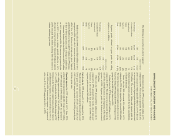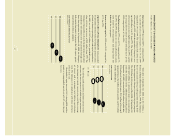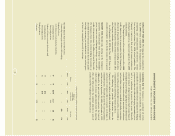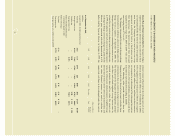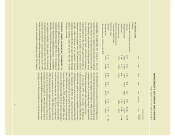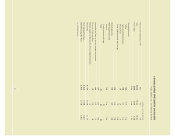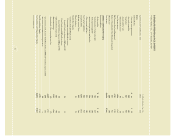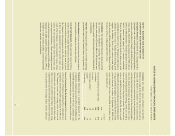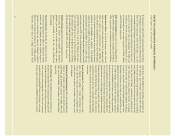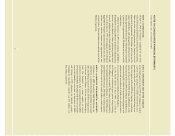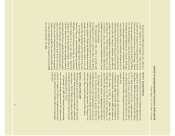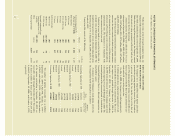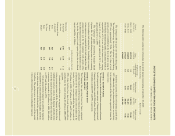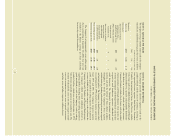Tyson Foods 2000 Annual Report Download - page 35
Download and view the complete annual report
Please find page 35 of the 2000 Tyson Foods annual report below. You can navigate through the pages in the report by either clicking on the pages listed below, or by using the keyword search tool below to find specific information within the annual report.
NOTES TO CONSOLIDATED FINANCIAL STATEMENTS
TYSON FOODS, INC. 2000 ANNUAL REPORT
NOTE 1: BUSINESS AND SUMMARY OF
SIGNIFICANT ACCOUNTING POLICIES
Description of Business: Tyson Foods, Inc., headquartered in
Springdale, Ark., is the world’s largest fully integrated producer,
processor and marketer of chicken and chicken-based conve-
nience foods, with 68,000 team members and 7,400 contract
growers in 100 communities. Tyson has operations in 18 states
and 15 countries and exports to 73 countries worldwide.
Tyson is the recognized market leader in almost every retail
and foodservice market it serves. Through its Cobb-Vantress
subsidiary, Tyson is also a leading chicken breeding stock
supplier. In addition, Tyson is the nation’s second largest
maker of corn and flour tortillas under the Mexican Original
brand, as well as a leading provider of live swine.
Consolidation: The consolidated financial statements include
the accounts of subsidiaries including the Company’s
majority ownership in Tyson de Mexico. All significant inter-
company accounts and transactions have been eliminated in
consolidation.
Fiscal Year: The Company utilizes a 52- or 53-week accounting
period that ends on the Saturday closest to September 30.
Reclassifications: Certain reclassifications have been made to
prior periods to conform to current presentations.
Cash and Cash Equivalents: Cash equivalents consist of invest-
ments in short-term, highly liquid securities having original
maturities of three months or less, which are made as part of
the Company’s cash management activity. The carrying values
of these assets approximate their fair market values. As a
result of the Company’s cash management system, checks
issued, but not presented to the banks for payment, may
create negative cash balances. Checks outstanding in excess of
related cash balances totaling approximately $126 million at
September 30, 2000, and $135 million at October 2, 1999, are
included in trade accounts payable, accrued compensation
and benefits and other current liabilities.
Inventories: Live chicken consists of broilers and breeders.
Broilers are stated at the lower of cost (first-in, first-out) or
market and breeders are stated at cost less amortization.
Breeder costs are accumulated up to the production stage
and amortized into broiler costs over the estimated produc-
tion lives based on historical egg production. Live swine
consist of breeding stock and finishing, which are carried at
lower of cost (first-in, first-out) or market. The cost of live
swine is included in cost of sales when the swine are sold.
Additionally, dressed and further-processed products, hatch-
ery eggs and feed and supplies are valued at the lower of cost
(first-in, first-out) or market. At September 30, 2000, live
swine inventory has been reclassified to inventory from
assets held for sale.
in millions
2000 1999
Dressed and further-processed products $460 $549
Live chickens 291 291
Live swine 75 –
Hatchery eggs and feed 67 67
Supplies 72 82
Total inventory $965 $989
Depreciation: Depreciation is provided primarily by the
straight-line method using estimated lives for buildings and
leasehold improvements of 10 to 39 years, machinery and
equipment of three to 12 years and other of three to 20 years.
Excess of Investments Over Net Assets Acquired: Costs in excess
of net assets of businesses purchased are amortized on a
straight-line basis over periods ranging from 15 to 40 years.
The Company reviews the carrying value of excess of
investments over net assets acquired at each balance sheet
date to assess recoverability from future operations using
undiscounted cash flows based upon historical results and
current projections of earnings before interest and taxes.
33


